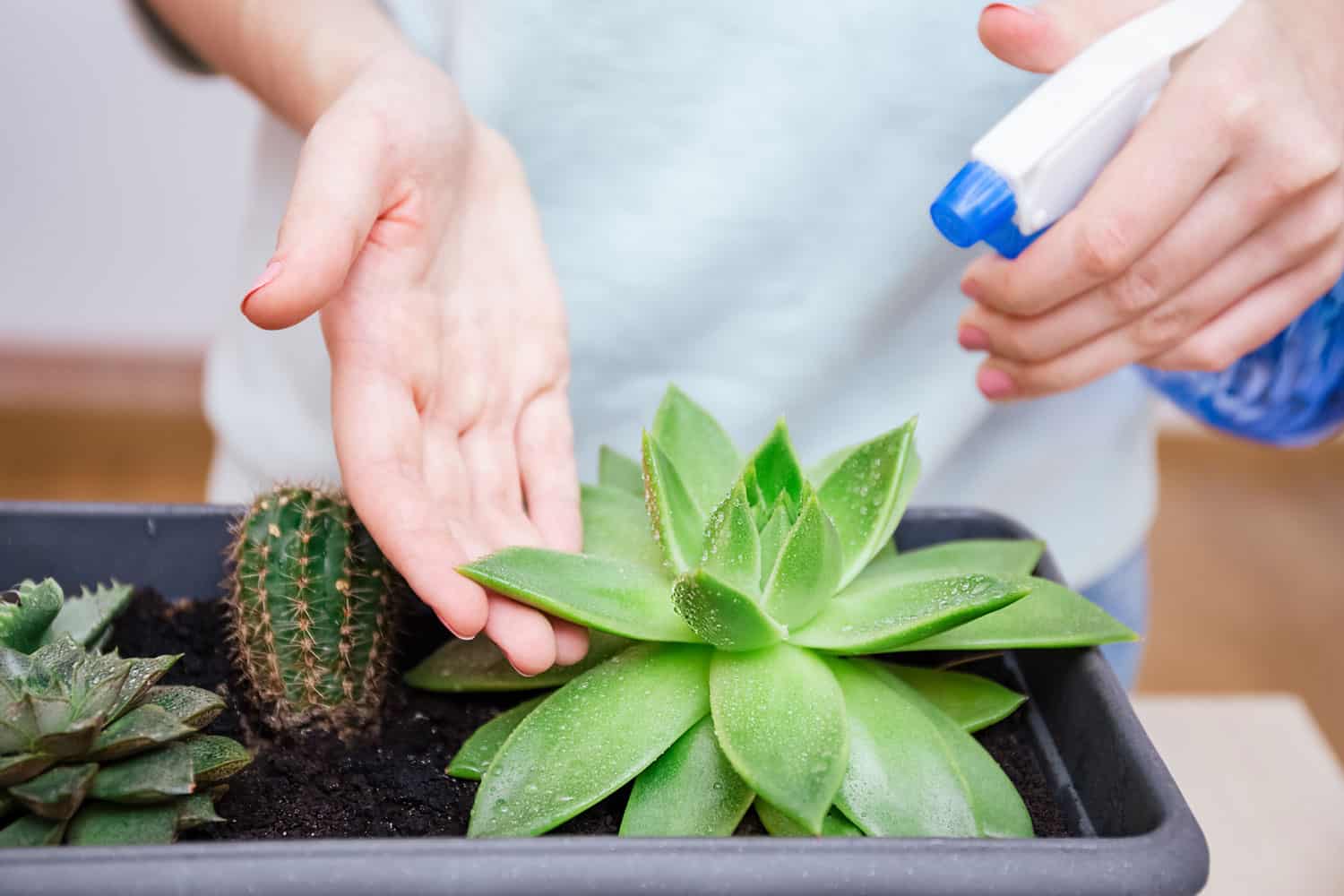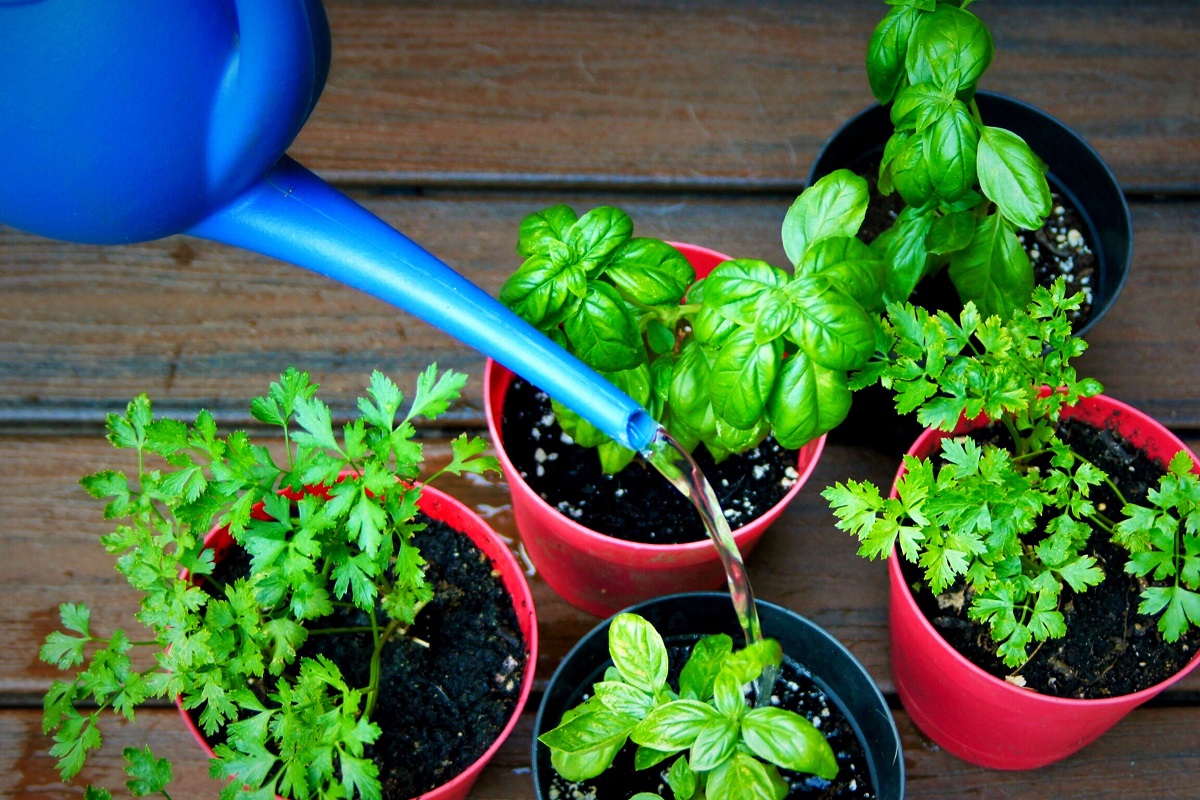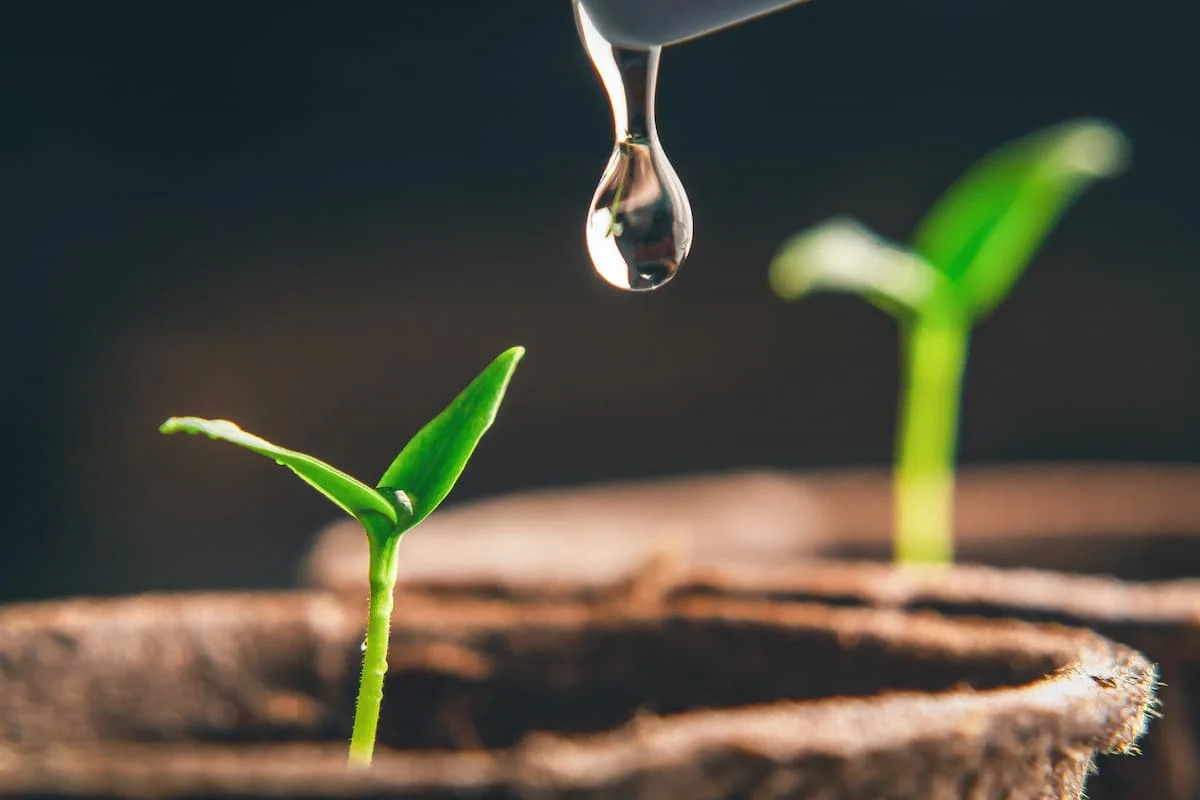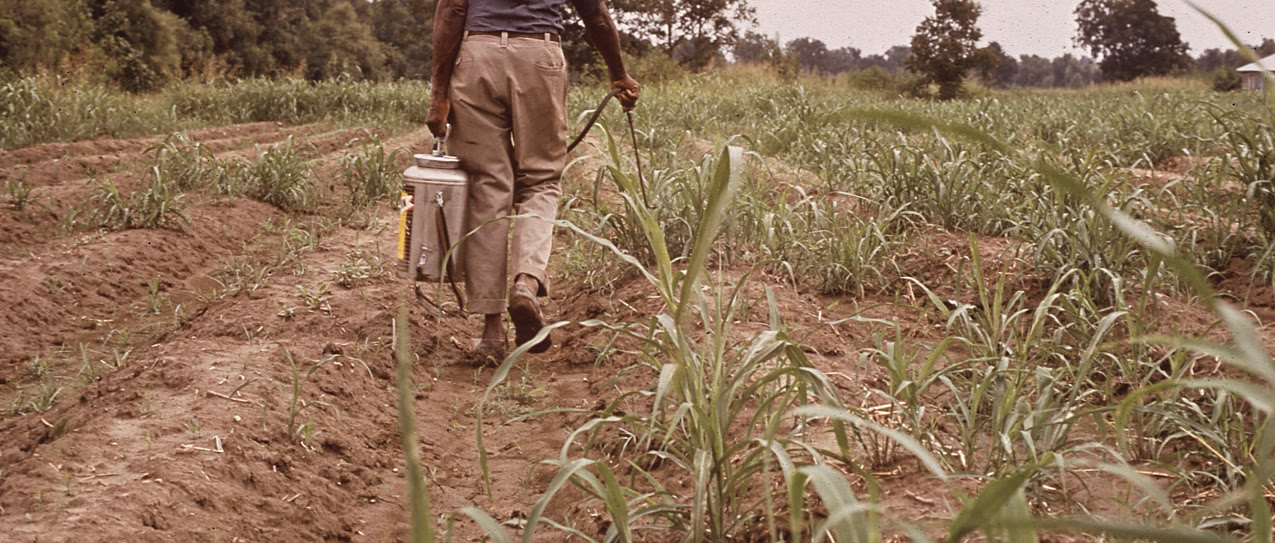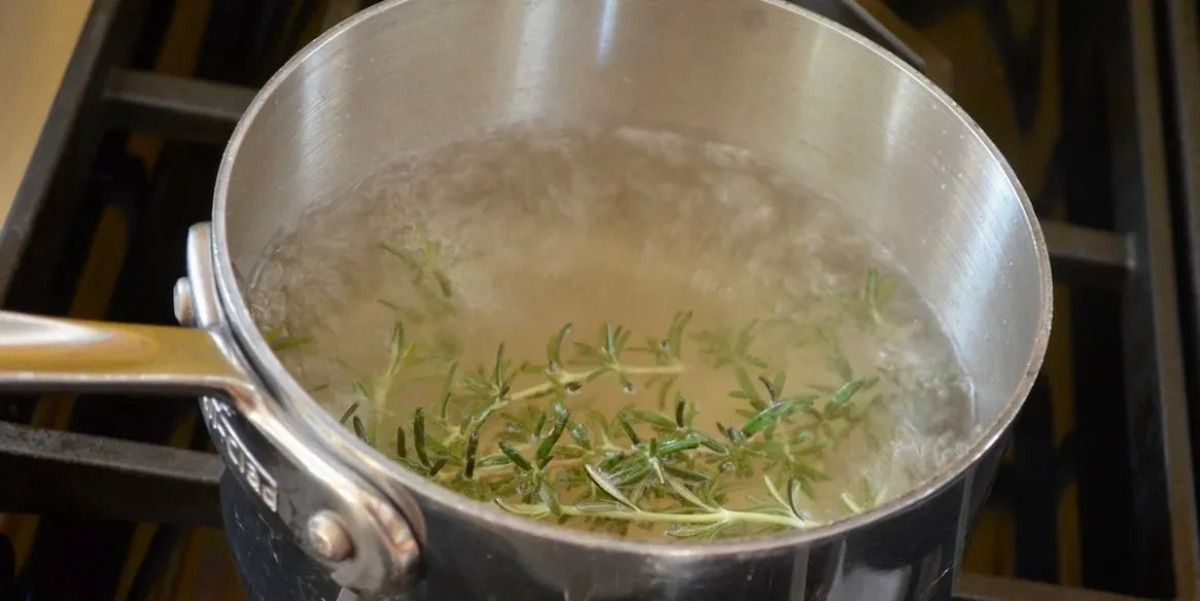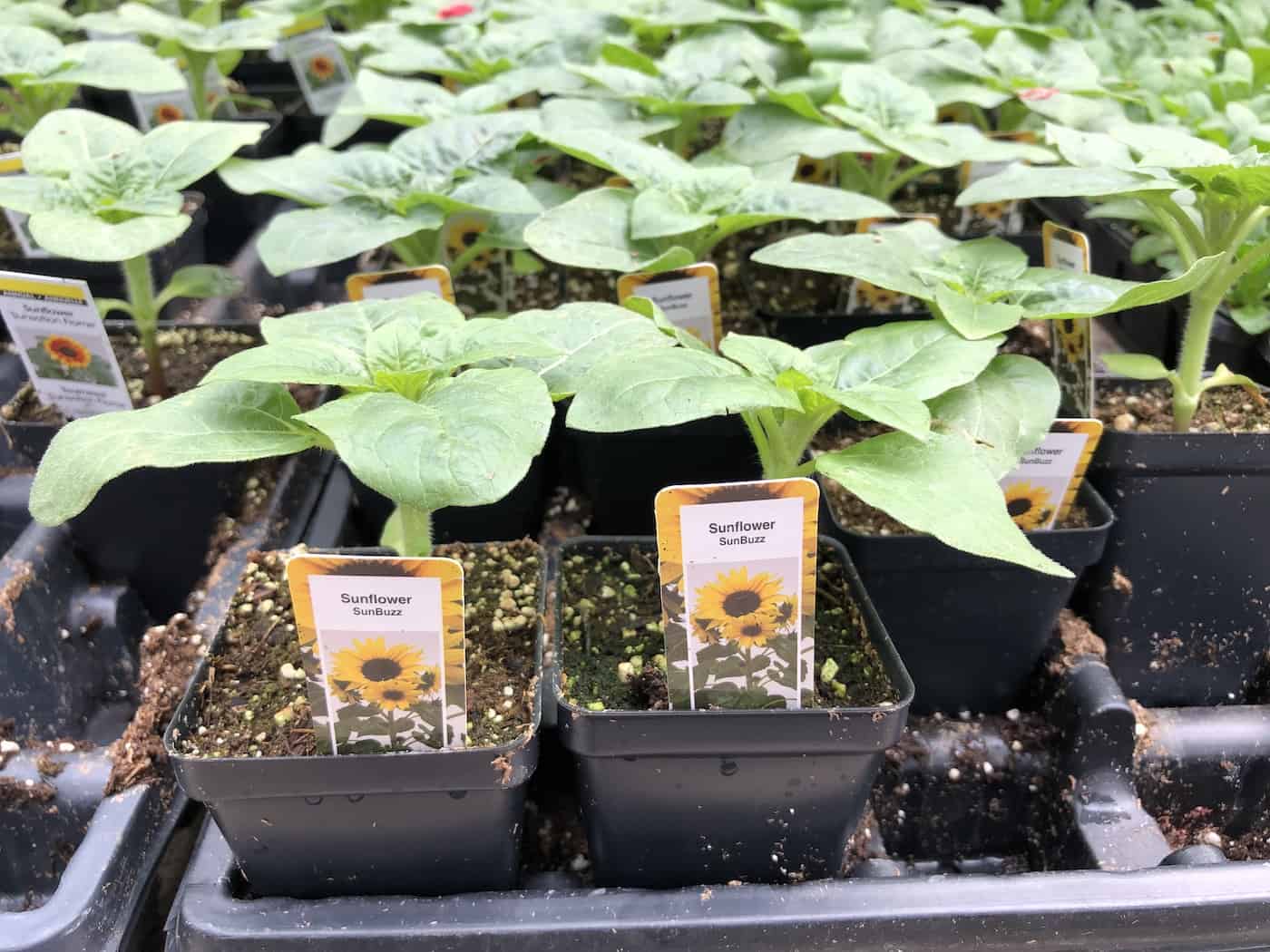Home>Gardening News and Trends>Latest News>How Often Should I Spray Pesticides
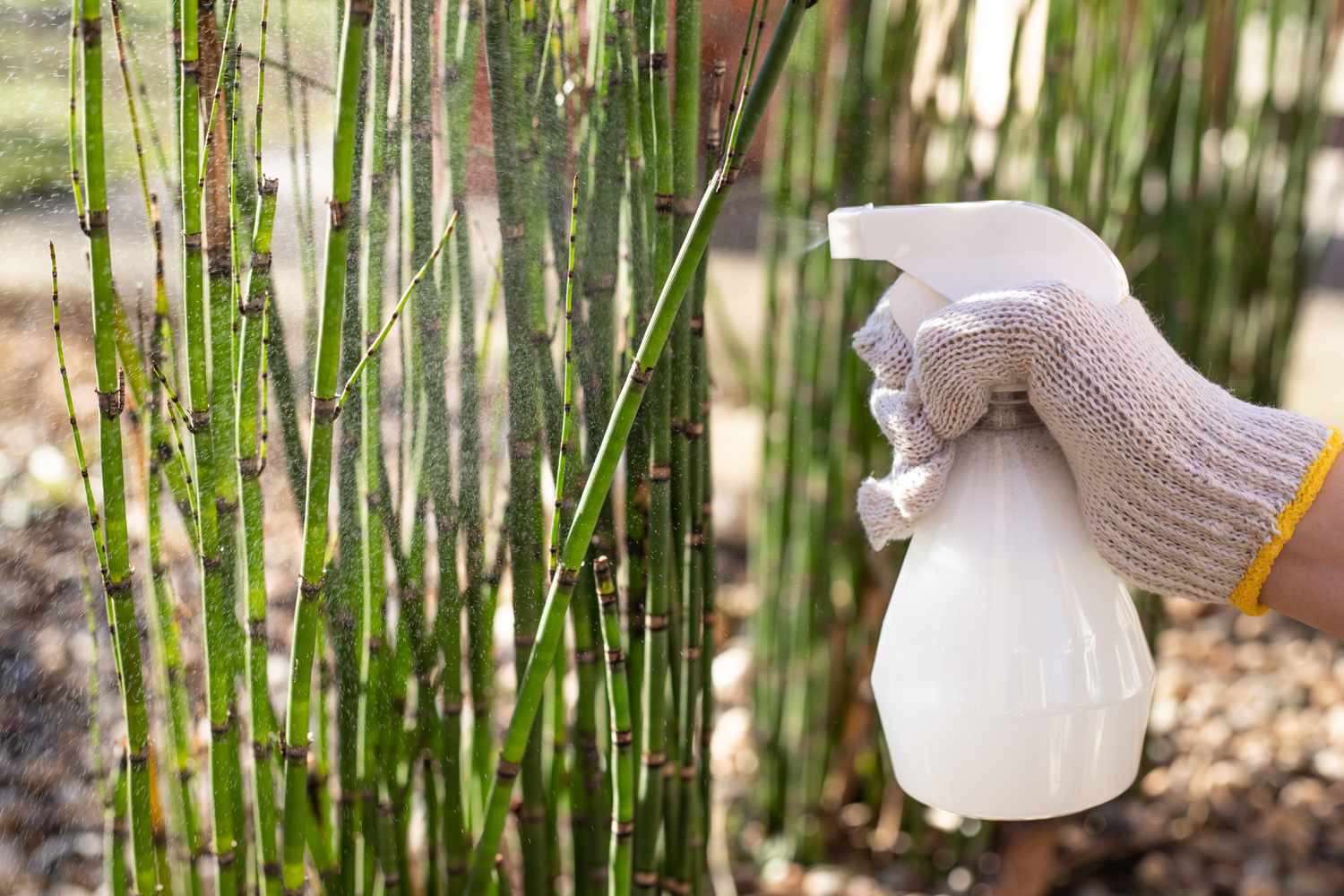

Latest News
How Often Should I Spray Pesticides
Modified: January 22, 2024
Discover the latest news on how often you should spray pesticides to protect your crops and garden. Find expert advice and guidelines for optimal pesticide application.
(Many of the links in this article redirect to a specific reviewed product. Your purchase of these products through affiliate links helps to generate commission for Chicagolandgardening.com, at no extra cost. Learn more)
Table of Contents
Introduction
When it comes to managing pests and ensuring the health and wellbeing of your plants, spraying pesticides can be an effective solution. However, determining how often to apply pesticides can be a daunting task, as the frequency will depend on various factors such as the type of pest, the severity of the infestation, and the specific crop or plants being treated.
Pesticides are chemical substances formulated to control, repel, or eliminate pests such as insects, fungi, or weeds. They play a crucial role in agriculture, horticulture, and even in controlling pests in and around our homes. Properly timed and targeted pesticide applications can significantly reduce pest damage and help maintain healthy plant growth.
However, overusing pesticides can have negative consequences. It can lead to the development of pesticide-resistant pests, harm beneficial organisms, contaminate soil and water sources, and pose health risks to humans and animals. It is crucial to strike a balance between effectively managing pests and minimizing the potential risks associated with pesticide use.
In this article, we will delve into the factors that influence the frequency of pesticide applications and provide practical recommendations to help you determine how often you should spray pesticides. Additionally, we will explore common mistakes to avoid when using pesticides and alternative pest control methods that can supplement or replace pesticide use.
By the end of this article, you will have a better understanding of the considerations involved in pesticide spraying and be equipped with the knowledge to make informed decisions about the frequency and methods of pesticide application.
Understanding Pesticide Spraying
Pesticide spraying involves the application of chemical substances to control or eliminate pests. It is an important component of integrated pest management (IPM), a holistic approach to pest control that aims to minimize the use of pesticides while effectively managing pests. Understanding the basics of pesticide spraying is crucial in order to make informed decisions about when and how often to apply these substances.
There are different methods of pesticide application, including foliar spraying, soil drenching, and seed treatment, with each method targeting specific pests or plant parts. Foliar spraying, for example, involves applying pesticides directly to the leaves and stems of plants. This method is commonly used for controlling insect pests that feed on foliage.
When it comes to frequency, the timing of pesticide applications is critical. It is essential to apply pesticides at the right stage of pest development to achieve maximum efficacy. For instance, insecticides are often most effective when applied during the early stages of pest infestation, before the population has become established and caused significant damage.
Factors such as the pest life cycle, environmental conditions, and the specific pesticide being used will all influence the optimal timing and frequency of application. It is important to follow the instructions provided by the pesticide manufacturer and consider consulting with a local agricultural extension service or pest control professional to determine the best schedule for spraying pesticides.
In addition to timing, the formulation of the pesticide also plays a role in determining the frequency of application. Some pesticides have longer residual activity, meaning they remain effective for an extended period of time. Others may require more frequent applications, especially if they degrade quickly or are washed away by rain.
Furthermore, it is essential to consider the potential impact of pesticide spraying on the environment and non-target organisms. In order to minimize these risks, it is recommended to use selective pesticides that target specific pests while sparing beneficial insects, such as bees and natural predators, which play a crucial role in maintaining ecological balance.
Understanding the fundamentals of pesticide spraying, including the different application methods, optimal timing, and potential environmental impacts, is key to successfully managing pests and minimizing the use of pesticides.
Factors to Consider for Pesticide Application Frequency
When determining how often to spray pesticides, several crucial factors come into play. By considering these factors, you can establish an effective and efficient pesticide application schedule that will help you manage pests while minimizing potential risks. Here are some key factors to consider:
1. Pest Type and Severity: The type of pest you are dealing with and the severity of the infestation are essential factors to assess. Different pests may have varying reproductive rates and life cycles, which will influence how often you need to apply pesticides. For instance, pests with rapid reproduction rates may require more frequent spraying to prevent population growth.
2. Growth Stage of Plants: The growth stage of your plants is another important consideration. Some pesticides may be more effective when applied during specific growth stages. For example, applying herbicides before weeds have fully matured may prevent further weed growth and seed production.
3. Environmental Conditions: Environmental conditions, such as temperature, humidity, and rainfall, can impact the effectiveness and longevity of pesticides. High temperatures and heavy rain can degrade pesticides more quickly, requiring more frequent applications. Additionally, certain pests may be more active during specific weather conditions, which can affect the frequency of pesticide spraying.
4. Crop Rotation: If you practice crop rotation, it’s important to consider the impact that different crops and their associated pests can have on your fields. Some pests have a preference for specific crops, and rotating crops can disrupt their life cycles and reduce infestations, potentially reducing the need for frequent pesticide spraying.
5. Pesticide Residual Activity: The residual activity of the pesticide being used is an important factor to consider. Some pesticides have longer-lasting effects, while others degrade more quickly. Evaluating the residual activity will determine how often you need to reapply the pesticide to maintain its effectiveness.
6. Regulatory Guidelines: Always comply with regulatory guidelines and restrictions regarding pesticide use in your region. These guidelines may specify application rates, timing, and restrictions on certain pesticides. Adhering to these guidelines ensures safe and responsible pesticide use.
7. Monitoring and Evaluation: Regularly monitor your plants and fields to assess pest populations and the effectiveness of your pesticide applications. Adjust the frequency of spraying based on the observed pest activity and the results of your monitoring efforts.
By carefully considering these factors and gathering relevant information, you can develop a well-informed and customized pesticide application schedule. Regular monitoring and evaluation will allow you to adapt and fine-tune your spraying frequency as needed, helping you find the right balance between effective pest control and minimizing potential risks.
Recommendations for Spraying Pesticides
When it comes to spraying pesticides, following recommended practices can help ensure effective pest control while minimizing potential risks to human health and the environment. Here are some important recommendations to keep in mind:
1. Integrated Pest Management (IPM): Implement an IPM approach that combines various pest control strategies, including biological controls, cultural practices, and chemical control (i.e., spraying pesticides). By integrating different methods, you can reduce reliance on pesticides and achieve long-term, sustainable pest management.
2. Proper Application Techniques: Use the correct application techniques to maximize the efficiency of pesticide spraying. This includes calibrating equipment, following label instructions, and maintaining proper nozzle height and pressure for uniform coverage. Improper application techniques can lead to underapplication or overapplication, both of which can be ineffective or harmful.
3. Follow Label Instructions: Always read and follow the instructions provided by the pesticide manufacturer. The product label contains valuable information on correct application rates, mixing instructions, safety precautions, and other vital details. Failure to follow label instructions may result in ineffective pest control or unnecessary risks.
4. Consider Thresholds: Determine pest thresholds based on recommended guidelines or expert advice. Pest thresholds indicate the population levels at which pest control measures, including pesticide spraying, should be initiated. Applying pesticides only when pest populations exceed the established thresholds helps reduce unnecessary pesticide use.
5. Timing: Time pesticide applications appropriately to target pests at vulnerable stages of their life cycle. For example, spray insecticides when pests are in their early development stages, as they are typically more susceptible at this time. Early intervention can reduce the need for frequent spraying later on.
6. Safety Precautions: Take necessary safety precautions when handling and applying pesticides. Use personal protective equipment (PPE), such as gloves, goggles, and masks, to protect yourself from direct contact or inhalation of pesticide residues. Follow local regulations and guidelines for storage, disposal, and the safe handling of pesticides.
7. Record Keeping: Maintain detailed records of pesticide applications, including the date, time, product used, dosage, and location. This information is valuable for future reference, evaluating effectiveness, and ensuring compliance with regulatory requirements.
8. Regular Monitoring: Continuously monitor pest populations and the effectiveness of pesticide applications. Keep an eye out for any signs of reinfestation or resistance. Regular monitoring allows for timely intervention and adjustments to spraying frequency or alternative pest control methods.
9. Consider Natural Alternatives: Explore natural or organic pest control options as alternatives to chemical pesticides. These may include biological controls, such as beneficial insects, using mechanical methods like handpicking pests, or employing cultural practices like crop rotation and companion planting.
By following these recommendations, you can effectively manage pests while minimizing the environmental impact and potential risks associated with pesticide spraying. Remember, responsible pesticide use is crucial for achieving sustainable and healthy agricultural practices.
Common Mistakes to Avoid When Spraying Pesticides
While spraying pesticides can be an effective pest management strategy, it’s important to be aware of common mistakes that can undermine its effectiveness or increase potential risks. By avoiding these mistakes, you’ll be able to optimize your pesticide applications and protect both your plants and the environment. Here are some common mistakes to avoid:
1. Overusing Pesticides: One of the most common mistakes is applying pesticides too frequently or using higher doses than necessary. Overuse of pesticides can lead to pesticide resistance, environmental contamination, and harm to beneficial organisms. Always follow recommended application rates and timing to ensure effective pest control without unnecessary risks.
2. Ignoring Pest Identification: It’s crucial to correctly identify the pests you are targeting before choosing and applying pesticides. Different pests may require different types of pesticides or control methods. Misidentifying pests can lead to ineffective treatments or unnecessary use of pesticides, potentially harming non-target organisms.
3. Neglecting Safety Precautions: Safety should always be a top priority when handling and applying pesticides. Ignoring safety precautions, such as the use of personal protective equipment (PPE), can put your health at risk. Always wear gloves, goggles, and masks as recommended on the pesticide label to minimize direct contact and inhalation of harmful chemicals.
4. Improper Mixing and Application: Failure to properly mix and apply pesticides can result in inconsistent coverage and reduced effectiveness. Carefully read and follow the instructions on the pesticide label regarding mixing ratios, proper application techniques, and equipment calibration. Inadequate or uneven coverage may allow pests to survive and reproduce.
5. Poor Timing: Timing is critical when it comes to pesticide applications. Applying pesticides too early or too late can result in reduced efficacy. It’s important to understand the life cycles of the pests you are targeting and their vulnerable stages. Be sure to spray when pests are most susceptible for optimal results.
6. Applying During Unsuitable Weather Conditions: Environmental factors such as high winds, heavy rain, or extreme temperatures can significantly affect the effectiveness of pesticide applications. Strong winds can cause drift, leading to unintended exposure and damage to non-target areas. Heavy rain can wash away the pesticide, reducing its effectiveness. Always check weather conditions before spraying and avoid application during unfavorable conditions.
7. Poor Record Keeping: Keeping accurate records of pesticide applications is essential for future reference, monitoring effectiveness, and ensuring compliance with regulatory requirements. Failure to maintain detailed records can lead to confusion, improper scheduling, and potential violations of pesticide use regulations.
8. Not Considering Alternatives: Relying solely on pesticide spraying without considering alternative pest control methods is a common mistake. Integrated pest management (IPM) emphasizes the use of diverse strategies, including cultural practices, biological controls, and mechanical methods. Incorporating these methods alongside pesticide spraying can reduce the need for frequent applications and minimize potential risks.
9. Neglecting Environmental Impact: Failing to consider the potential environmental impact of pesticide applications is a significant mistake. Pesticides can contaminate soil, water sources, and non-target areas, harming beneficial insects, wildlife, and ecosystems. Always choose selective pesticides that target specific pests while minimizing harm to non-target organisms.
By avoiding these common mistakes, you can improve the effectiveness of your pesticide applications, reduce potential risks, and promote greater sustainability in pest management practices.
Alternative Pest Control Methods
While pesticide spraying can be an effective tool in managing pests, it is important to explore alternative pest control methods that can supplement or replace the use of chemical pesticides. Incorporating these methods into your pest management strategy can reduce reliance on pesticides and promote greater sustainability. Here are some alternative pest control methods to consider:
1. Biological Controls: Biological controls involve using natural enemies of pests to manage their populations. This can include the use of beneficial insects, such as ladybugs or parasitoid wasps, that feed on or parasitize pests. By introducing these natural predators or parasites, you can suppress pest populations without relying solely on chemical pesticides.
2. Cultural Practices: Cultural practices focus on modifying agricultural practices to create unfavorable conditions for pests. This can include techniques such as crop rotation, intercropping, and use of trap crops. Crop rotation disrupts pest life cycles, while intercropping diversifies plant species, reducing pest vulnerability. Trap crops are planted to attract pests away from main crops, thereby protecting them from infestation.
3. Mechanical and Physical Controls: Mechanical and physical controls involve physically removing or excluding pests. This can include techniques like handpicking insects, using barriers or nets to protect plants from pests, and employing traps or pheromone-based devices to attract and capture insects. This method is particularly useful for small-scale gardens or specific pest problems.
4. Cultural Control: Cultural control methods focus on creating conditions that discourage pest development or promote plant health. This can involve practices like proper irrigation management, maintaining proper nutrient levels in the soil, and providing adequate spacing between plants. Healthy and well-maintained plants are less susceptible to pest infestation.
5. Organic and Botanical Pesticides: Organic pesticides, derived from natural sources, can be a viable alternative to synthetic chemical pesticides. These include substances like neem oil, pyrethrin, or diatomaceous earth. While organic pesticides may still be used sparingly, they generally have lower environmental impact and can be a safer option for both humans and beneficial organisms.
6. Genetic Resistance: Plant breeders can develop crop varieties with genetic resistance to specific pests. By selecting and breeding plants that possess natural resistance traits, it is possible to reduce the reliance on pesticides. This method is particularly effective when combined with other pest management strategies.
7. Monitoring and Early Intervention: Regular monitoring of pest populations allows for early detection and intervention before infestations become severe. This can involve scouting fields, using pheromone traps, or visual inspection. By implementing appropriate pest control measures at the early stages of infestation, you can reduce the need for extensive pesticide applications.
8. Education and Knowledge Sharing: Stay up-to-date with the latest research, information, and best practices regarding pest management. Join local agricultural extension programs, attend workshops, and engage with fellow growers to learn about innovative pest control methods. Sharing knowledge and experiences can help promote effective and sustainable pest management practices for the entire community.
By incorporating these alternative pest control methods into your overall pest management strategy, you can reduce pesticide use, minimize environmental impact, and maintain the long-term health and productivity of your crops or plants.
Conclusion
Effective pest control is crucial for maintaining the health and productivity of plants, but it is important to approach it with careful consideration and a focus on sustainability. Spraying pesticides can be a valuable tool in pest management, but it should not be the sole reliance. By understanding the factors that influence pesticide application frequency, considering alternative pest control methods, and avoiding common mistakes, you can enhance the effectiveness of your pest management efforts while minimizing risks to the environment and human health.
When determining how often to spray pesticides, factors such as pest type and severity, growth stage of plants, environmental conditions, and pesticide residual activity should be taken into account. By evaluating these factors, you can establish a customized pesticide application schedule that maximizes efficacy and minimizes unnecessary pesticide use.
It is important to keep in mind that pesticide spraying should be integrated into an overarching pest management strategy. Incorporating alternative methods like biological controls, cultural practices, mechanical and physical controls, and organic pesticides can help reduce the reliance on chemical pesticides. This approach promotes sustainability, enhances ecological balance, and reduces potential risks to non-target organisms and the environment.
By following recommended practices, such as proper application techniques, following label instructions, and adhering to safety precautions, you can optimize the effectiveness of pesticide spraying. Regular monitoring, record keeping, and keeping up-to-date with the latest pest management research and knowledge are also essential for successful pest control.
In conclusion, the frequency of pesticide application should be determined by a careful evaluation of various factors. By incorporating alternative pest control methods and adopting a holistic approach, we can achieve effective pest management while minimizing the environmental impact and potential risks associated with pesticide spraying. This will contribute to the long-term health and sustainability of our crops, plants, and ecosystems.
